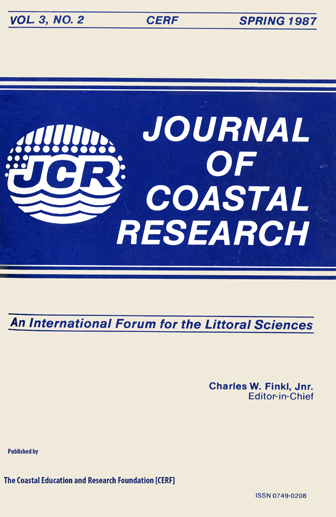The Florida Everglades: A Buried Pseudoatoll?
Keywords:
Everglades, Florida, pseudoatoll, astrobleme, tombolo, iridium anomaly, collapse basin, Atlantic Coastal Ridge, EoceneAbstract
Based on biostratigraphic data, the Everglades region of southern Florida is shown to contain a number of problematical geomorphological features, including an elongated, lagoon like central basin surrounded by a large, atoll-like ring of fossil coral bank reefs. The youngest and largest reef tract is of Pliocene age, and underlies the Atlantic Coastal Ridge and the other topographic highs that surround the Everglades. Since both the distinctive atoll-like feature and the lagoon-like central basin are not associated with any known volcanic or tectonic process, the term pseudoatoll is used for this type of ring-shaped reef tract. It is hypothesized that the Pliocene pseudoatoll possibly represents an enlarged version of several older, increasingly smaller, pseudoatolls that had built northward up the carbonate platform. The existence of an initial, smallest pseudoatoll of Oligocene age is hypothesized, and this may have formed around a small, collapse feature under the southern part of the Everglades. It is here proposed that the collapse feature represents the remnants of a simple astrobleme that was produced by a meteorite impact in the late Eocene. The existence of a Floridian astrobleme is supported by several lines of geological and geophysical evidence, some of which include: the absence of late Eocene (Ocala) sediments, and the presence of abundant fracture zones and gravity lows (-5 milliGals) under the southern Everglades; a valley-like depression in the middle Eocene limestones (Avon Park) below the missing late Eocene; the existence of a strong magnetic anomaly (100-250 nannoTeslas) in the deepest part of the basin; and the fact that the missing Eocene sediments are contemporaneous with an iridium anomaly on Barbados. The iridium anomaly is not associated with microtektites, as would be expected of a meteorite impact on a carbonate platform. The carbonate astrobleme acted as a template for coral reef growth, producing a pseudoatoll. As sea levels rose in the Neogene, the original pseudoatoll enlarged and infilled to become the Everglades.


